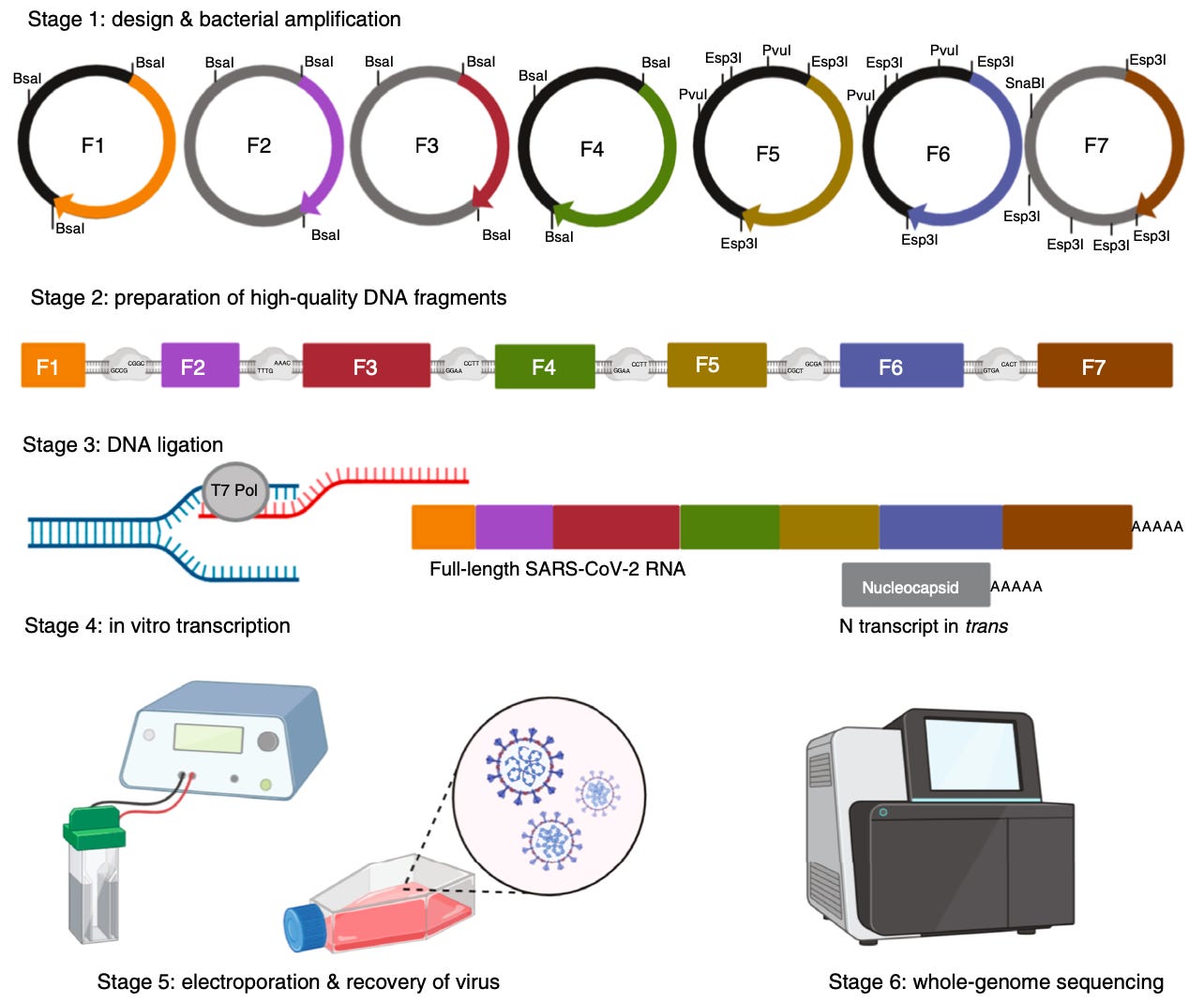How to make your own SARS-CoV-2 variants
Don't try this at home, kids
Are you an evil genius? Mad scientist? Or maybe you just read my Deltacron post and want to interfere with my predictions?
Well, good news for you! Some researchers last year published a highly detailed, step-by-step guide to engineering SARS-CoV-2.
Here are the general steps:
Prepare seven bacterial plasmids, each containing a portion of the viral genome. This step is also where you make your desired modifications to the genome.
Digest the plasmids with restriction enzymes to form linear fragments.
Ligate the fragments together into a full-length DNA copy of the SARS-CoV-2 genome.
Use T7 RNA polymerase to transcribe the genome in vitro. Also transcribe RNA encoding the nucleocapsid protein.
Electroporate the RNA into cultured cells, which will then produce virus.
Test your new virus in lots of wacky experiments. What could go wrong?
The paper also provides a shopping list of materials to buy, and troubleshooting information to solve common problems with the protocol.
I estimate it would take me personally about 2–3 months to engineer my own SARS-CoV-2, using equipment I already have access to in the lab where I work.1 I’m not even a virologist and I could follow this protocol quite easily. Even an undergrad would have a good chance of success.
In general, this paper is an excellent example of the detailed protocols that should be published to ensure scientific reproducibility. The authors did an amazing job making things clear. But in this case, it’s not a good thing.
Other scientists have raised concerns about publishing this protocol, saying it makes it too easy for inexperienced and careless (or worse, malicious) scientists to engineer SARS-CoV-2 variants. I wholeheartedly agree with these concerns. The fact that this protocol was published shows that the publication incentives in academia are misaligned with what’s best for society.2
I could probably even get away with it by pretending to be doing my regular research.
I’m using this SARS-CoV-2 paper as an example, but there are even worse ones that I don’t want to draw attention to.


Fuck this shit, Metacelsus! How bad is this? This is not a realm where I have much knowledge or smarts. Can you give an estimate of probability that stoopit or evil amateurs will turn something dangerous loose on the world using this recipe? If the probability is not high, what is keeping it from being, like, 85%, which is where my unhapppy imagination is currently placing it?
It seems to me the difficulty an evil genius would run into with engineering a new, super-lethal virus variant would be getting the "super-lethal" part, not the actual technical challenge of making the virus. Finding the right way to mutate the virus in order to make it more lethal without compromising the function/structure of the proteins seems extremely difficult to me.